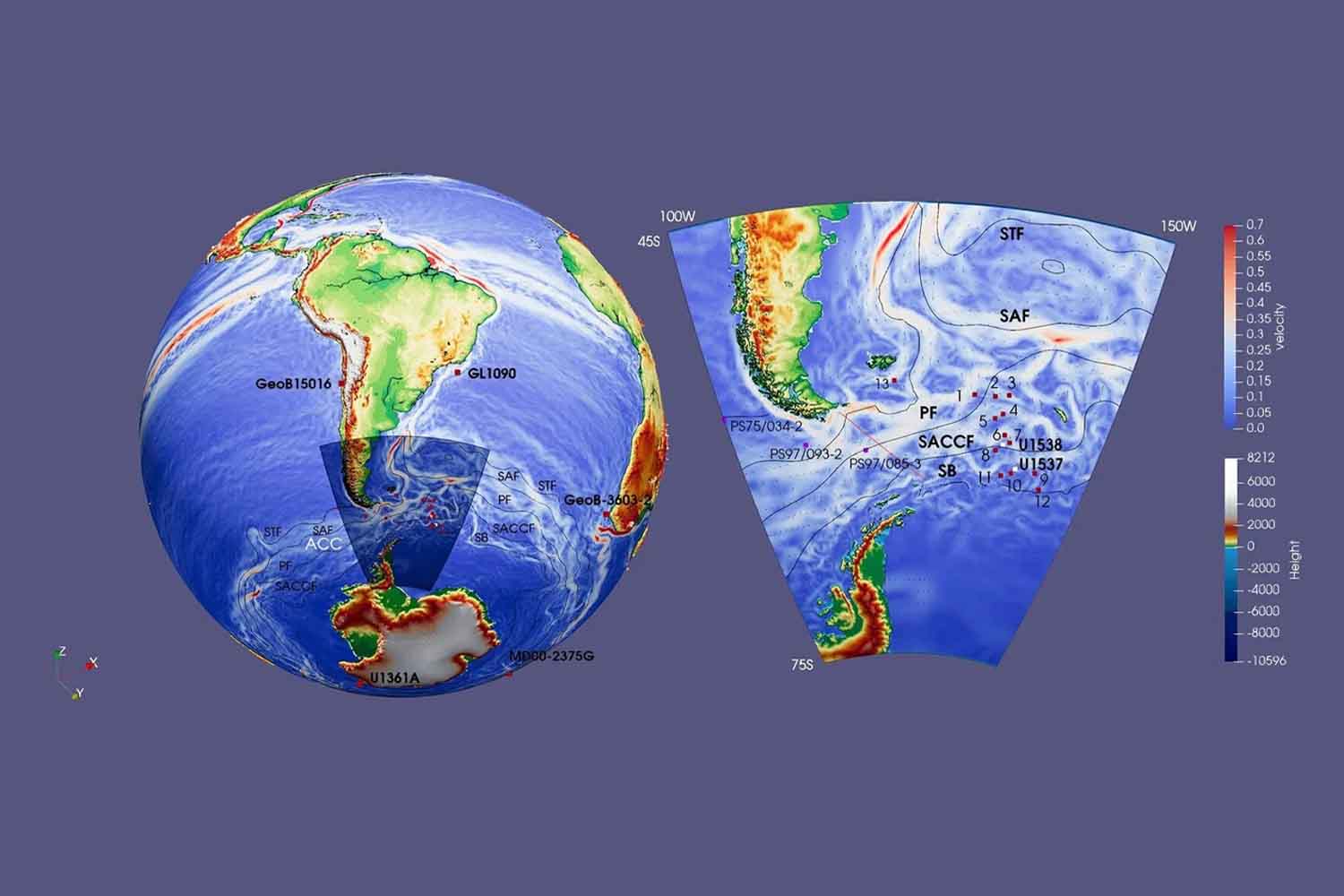A team of scientists has discovered that Earth's largest ocean current has slowed dramatically: the data comes from the bottom of the Scotia Sea

Table of contents
The Antarctic Circumpolar Current, also known as the ACC, is the most powerful ocean current on the planet. It literally circles Antarctica from west to east, driven by strong westerly winds. It transports an impressive amount of water — about 173 million cubic meters (6.1 billion cubic feet) per second — and connects three oceans: the Atlantic, Pacific, and Indian.
This enormous flow of cold water regulates global temperatures, moves nutrients between oceans, and plays a crucial role in the carbon cycle. In essence, it’s one of the fundamental gears in Earth’s climate machinery. But something is changing.
According to an international study published in the journal Nature Communications, 130,000 years ago the ACC flowed three times faster than today. The data comes from marine sediment samples collected at depths exceeding 9,840 feet (3,000 meters), in the Scotia Sea, north of Antarctica. The mission was led by the University of Bonn, in collaboration with researchers from five countries.
How Earth’s most powerful current has changed
To reconstruct the current’s velocity in the past, scientists studied the size of grains in sediments deposited on the seafloor. The reasoning is straightforward: the stronger the current, the longer particles remain suspended in the water. When the current slows down, finer particles settle. By analyzing the proportion between coarse and fine particles, researchers can determine how intense the current was during a specific period.
In the case of the ACC, the difference is striking. According to Michael Weber, a geologist at the University of Bonn and expedition coordinator:
During the penultimate warm period – about 130,000 years ago – the current was more than three times faster compared to recent millennia.
A surprising discovery, considering that the climate back then was similar to today’s. So what changed?
What does Earth’s orbit have to do with ocean current speed?
The answer, researchers explain, might be found in space. Specifically, in the way Earth orbits the Sun. Our planet follows an elliptical orbit that changes shape every 100,000 years or so. Additionally, Earth’s axial tilt and rotation change every 21,000 years. These two factors modify the amount of solar energy reaching different parts of Earth — and this influences winds, including those that power the ACC.
According to the study, 130,000 years ago both these astronomical factors were at their maximum, which would have strengthened the westerly winds, making the current much faster. Not only that: the current would have shifted further south, by about 373 miles (600 kilometers), bringing warmer waters closer to Antarctic ice sheets.
This could have contributed to a sea level rise of 20 to 30 feet (6 to 9 meters) during the last interglacial period. For comparison: today, millions of people live less than 3 feet (1 meter) above sea level.
What does this study tell us about the future?
Currently, Earth’s climate system, if left to act on its own, should slowly shift the ACC northward, over centuries or millennia. But the most recent climate models predict the opposite: a southward movement caused by ongoing climate change. The melting of Antarctic ice introduces fresh, cold water into the oceans. This slows deep circulation and weakens the current.
According to scientists, understanding how much natural factors count compared to human-caused ones is now an absolute priority. For this reason, combining geological data from the past with advanced climate simulations will be necessary.
As stated by Xufeng Zheng, professor at Hainan University and study coordinator:
To understand where we’re going, we must look back, but also forward. A dialogue between geology and climate science is needed.
Source: Nature Communications
